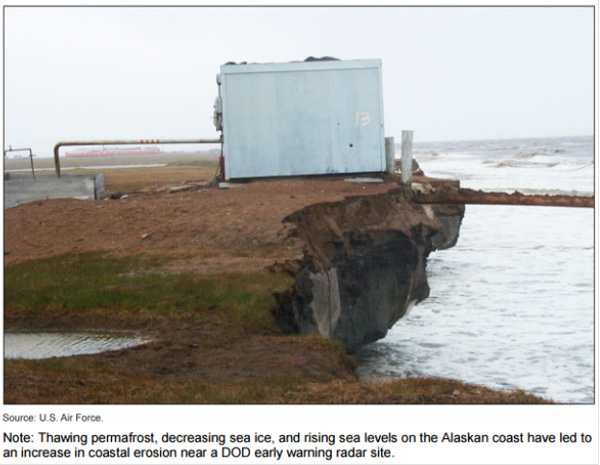
Climate Change Response
The federal government’s potential responses to climate change include adaptation (adjustments to natural or human systems in response to actual or expected climate change) and climate engineering (large-scale, deliberate interventions in the Earth's climate system to diminish climate change or its impacts).
According to the National Research Council and the U.S. Global Change Research Program, changes in Earth’s climate—including higher temperatures, changes in precipitation, rising sea levels, and more intense and frequent severe weather events—are under way and expected to grow over time. These risks create significant fiscal exposure for the federal government.
Recent GAO reports that reviewed the vulnerabilities of energy, water, defense infrastructure, ocean acidification risks, and climate change effects on federal insurers and supply chains found that federal agencies have begun to address climate change risks. For example, the combination of thawing permafrost, decreasing sea ice, rising sea levels, and land erosion on the Alaskan coast has damaged roads, seawalls, and runways at several Air Force radar early warning and communication installations (figure 1). The Department of Defense has begun to assess its installations’ vulnerability to potential climate change effects and directed its planners to consider climate change in planning efforts.
Figure 1: Coastal Erosion Near DOD Early Warning Site in Alaska

However, governmentwide coordination, planning, and research in climate change response needs to be improved, as does access to information and technical assistance for decision makers. These areas are part of GAO’s High Risk List designation for climate change. Policymakers have raised questions about climate engineering, or geoengineering—large-scale deliberate interventions in the earth’s climate system to diminish climate change or its impacts—and its role in a broader strategy of mitigating and adapting to climate change. Figure 2 shows examples of geoengineering. However, GAO has found that the United States lacks a clear strategy for geoengineering research. It is also unclear how current federal laws and international agreements apply to such interventions. Few geoengineering experiments or modeling studies have been conducted, and major uncertainties remain on the effectiveness and potential consequences of geoengineering.
Figure 2: Examples of Geoengineering Technologies

Source: GAO.






